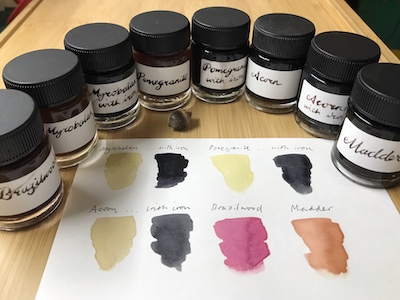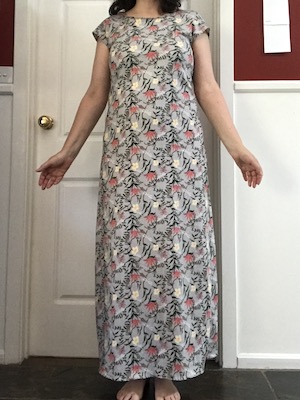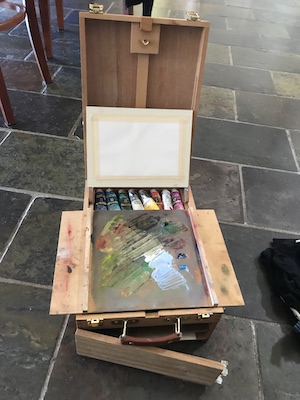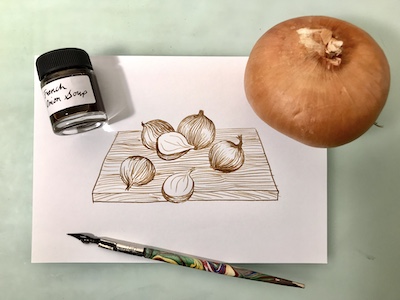My year of Daily Art happened at just the right time, finishing a month and a half before life got too difficult to accommodate such a challenge. I had meant to take a break and start again after a month, then changed that to three, and before I knew it six months had passed and it was clear painting every day is no longer practical.
Which is fine. I do want to paint at home with some regularity, however, and the Daily Art challenge made me realise I really like and want to continue painting still lifes. To do that regularly at home I needed a permanent painting space where I could control the light and it didn’t matter if I got paint on the floor, so I have converted half of our big laundry into a mini-studio.

This is where I did most of the ink-making. It was such a cosy nook I decided to keep using it. We removed a drawer unit and inserted shelving and drying racks above the desktop. The cupboards to the right now hold most of my art materials.

This is an old pine table I restored twenty years ago. I have a new light with an amazing variety of controls and a shadow box set up cobbled together from mdf, aluminium channel and perspex sheeting.
I’m exploring painting different materials. At the moment it is glass, and I intend to focus on wood, ceramic, metal, paper and plastic in future. I’m not exploring grounds or mediums and will probably stick to oils and gouache. But there’s a new aspect that I’m focussing on: saleability.
There’s a lot of work from the Daily Art challenge that isn’t worth trying to sell, which I don’t mind because it was fun to do and I learned a great deal. Now I want to include end use into my plans. In particular I’m considering what makes a piece more likely to sell or be adopted by a friend, and letting that guide my choices. It’ll be interesting to see if I’m right or wrong – either will just be another part of the learning process.
I have also given myself another challenge: keeping art for weekdays, work and family-related matters and restricting hobbies to weekends. For a while now it’s felt like the balance was wrong. So far it has felt surprisingly right to divide up the week this way. I guess old habits die hard.
And while on the subject of imbalances… I’ve been reading articles about AI and finding it all rather fascinating but also sad. Like most new technologies it has potential to be a useful tool, but if it can be used to exploit people someone will find a way. Until the copyright issues are worked out, I’m going to avoid posting images of my paintings online.





































